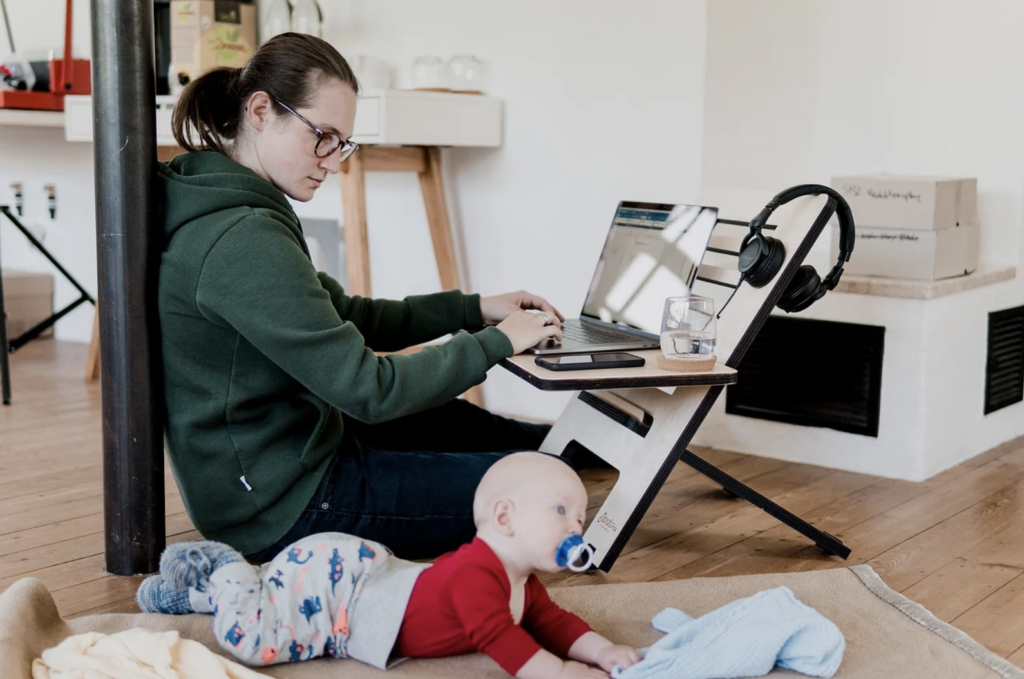The tremendous gap between what parents pay for childcare, and what early educators earn, is a product of a broken market. It cannot be solved on its own.

Editor’s note: The piece below is adapted from testimony by The Century Foundation’s director for economic justice and senior fellow Julie Kashen before the Senate HELP Committee at a hearing focused on childcare and pre-K on March 22. In it, Kashen explains the necessity of investing in a comprehensive childcare and pre-K system for families, and also for the U.S. economy.
What could be more fundamental to American communities than how we care for our children? Picture the newborn snuggling with her parents, a pre-K teacher reading The Very Hungry Caterpillar to her students or the joy when a toddler makes his first friend in a childcare classroom. We are here today to talk about not only why we must prioritize caring for children as a shared American value, but also as an imperative for equitable economic growth.
Lowering Costs for Families
American families have long been struggling with out-of-reach childcare prices. Childcare costs the equivalent of college tuition, rent or mortgage payments. These costs often come early in parents’ working lives, when they can least afford them.
That’s if they can find childcare. Even before the pandemic wreaked havoc on the childcare sector, more than half of families with young children lived in a childcare desert, and two-thirds in infant and toddler care deserts, neighborhoods without enough childcare spots.
And early educators, who are majority women and disproportionately women of color, have long been severely underpaid for their valuable and complex work.
The tremendous gap between what parents pay, and what early educators earn, is a product of a broken market. It cannot be solved on its own. The federal government must step in with sustainable, long-term investments through reconciliation.
Essential Elements of Federal Childcare and Pre-K Investments
The COVID-19 pandemic exacerbated an unacceptable status quo. This is why parents, teachers, business leaders, providers, grandparents, economists and more have come together in support of the childcare and preschool investments proposed by Chair Patty Murray (D-Wash.) and her colleagues.
The path forward must include these five principles reflected in that proposal:
- Guarantee assistance to every eligible family, including middle-class families.
- Lower childcare costs for families. The Democratic proposal would lower costs by about $5,000 a year per family.
- Give every family the freedom to choose the care and early education that works best for them. This requires building the supply of high quality childcare and pre-K options in diverse settings including centers, family childcare, faith-based programs, Head Start and Early Head Start programs and in schools.
- Invest in the workforce by providing higher compensation and training opportunities.
- Ensure all children have childcare that fosters their health, wellbeing and learning during the earliest years of foundational brain development.
Some will say that we already have a childcare policy in place. I want to address that. The Child Care Development Block Grant (CCDBG) serves working families with low incomes, but because of chronic underfunding only one in nine eligible young children actually receive assistance. Because of the lack of resources and limited reach, most families are not included at all. The Democratic proposal would reach more than 20 times the number of children served by CCDBG in states like Kansas, South Carolina, Utah, Wisconsin, Minnesota, Nevada and Colorado.
The status quo is untenable. Without intervention, safe, nurturing, reliable childcare and preschool will be out of reach for all but the wealthiest of families. Racial, economic and gender inequities will expand. The vast majority of families will continue cobbling together makeshift solutions that create stress, instability and challenges for them, their employers and their children. Some will be forced to leave the workforce altogether or reduce their work hours, causing long-term negative impacts on lifetime earnings, retirement security and career advancement.
On the flip side, the Democratic proposal will support children, families and economic growth. A new report from The Century Foundation and Center for Economic Policy Research finds that annual parental earnings will increase nationwide by $48 billion. Reduced business disruptions will generate $60 billion annually and expanding the early learning sector will yield $30 billion annually.
Beyond these gains, families will have more economic stability, parents—especially mothers—will have more choices. And children will have stronger social, emotional and academic foundations. That’s what it looks like to care for America’s children.
While Congress has important choices to make in the coming weeks, parents of young children need choices too. If they can’t get childcare they can’t go to work. Period. Congress has the opportunity right now to make childcare work for millions of Americans.
Up next:





